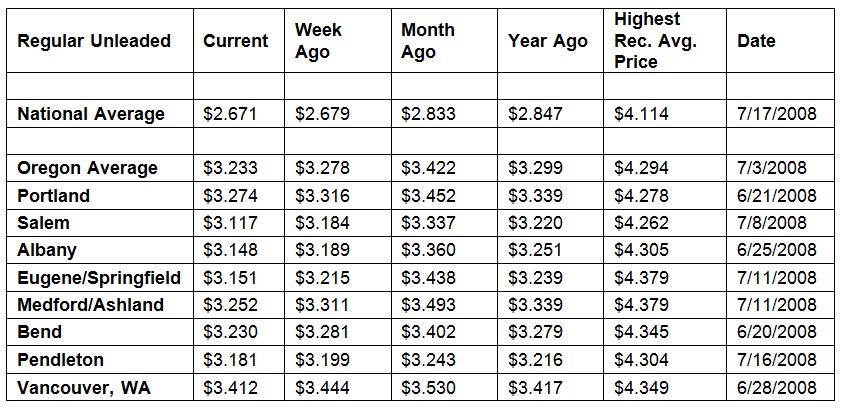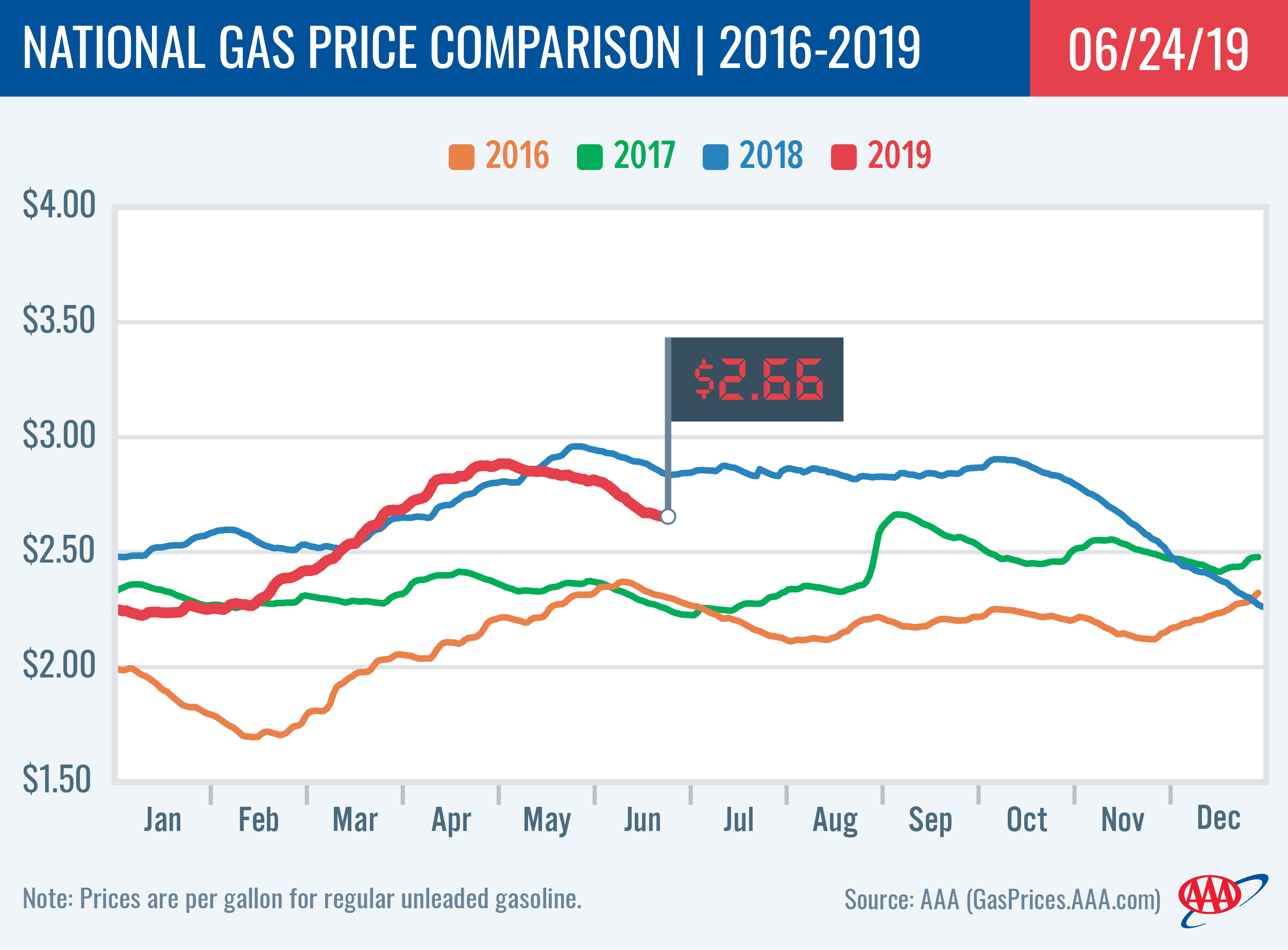PORTLAND, Ore., – Pump prices continue to move lower this week; however, robust demand in the U.S. and a jump in crude oil prices due to tensions in the Middle East could send gas prices higher in the short-term. For the week, the national average slips half a cent to $2.67 a gallon. The Oregon average loses a nickel to $3.23 a gallon.
U.S. gasoline demand hit its highest level at 9.93 million b/d, for the week ending June 14. It is the highest level ever recorded since the U.S. Energy Information Administration (EIA) began publishing data in 1991.
At the end of last week, a massive fire took Philadelphia Energy Solution’s (PES) Philadelphia, the largest on the East Coast, offline, causing concern of what this could do to gas prices in this region. Gasoline from Canada, neighboring refineries, and the Colonial Pipeline are likely solutions to help meet demand but pump prices in the area will likely climb in the coming days.
Oregon is one of 32 states and the District of Columbia where prices are lower now than a week ago. Alaska (-8 cents) and Indiana (-8 cents) have the largest weekly decreases. Ohio (+17 cents) and Illinois (+7 cents) have the largest weekly increases. This week there are eight states with an average above $3 a gallon, same as a week ago.
All 50 states and D.C. have lower prices now than a month ago. The national average is 16 cents less and the Oregon average is 19 cents less than a month ago. Indiana (-27 cents) has the largest month-over-month decline.
The West Coast continues to have the highest pump prices in the nation with all of the region’s states landing on the top 10 most expensive list.
| Rank | Region | Price on 6/25/19 | |
| 1 | California | $3.74 | |
| 2 | Hawaii | $3.64 | |
| 3 | Washington | $3.36 | |
| 4 | Nevada | $3.35 | |
| 5 | Alaska | $3.29 | |
| 6 | Oregon | $3.23 | |
| 7 | Idaho | $3.05 | |
| 8 | Utah | $3.04 | |
| 9 | Arizona | $2.92 | |
| 10 | Pennsylvania | $2.85 |
California tops the list for the 14th consecutive week with Hawaii, Washington, Nevada, Alaska and Oregon rounding out the top six. Oregon is sixth for the seventh week in a row. All state averages in the region have decreased on the week, with Alaska (-8 cents) seeing the largest drop.
The EIA’s recent report for the week ending on June 14, showed that West Coast gasoline stocks increased slightly by 200,000 bbl from the previous week and sit at 31 million bbl. The current level is approximately 200,000 bbl more than last year’s level at this time, which could help suppress any price spikes if there is a supply disruption or gas demand surges in the region this week.
The cheapest gas in the nation can be found in Mississippi ($2.26) and South Carolina ($2.26). For the 19th week in a row, no states have an average below $2 a gallon.
Oregon is one 48 states and the District of Columbia where drivers are paying less than a year ago. The national average is 18 cents less and the Oregon average is seven cents less than a year ago. New Mexico (-30 cents) has the largest year-over-year drop. California (+8 cents) and Nevada (+7 cents) are the only states with year-over-year increases.
Oil Market Dynamics
Crude prices have been climbing due to rising tensions in the Middle East. On Friday, it was reported that the U.S. was very close to executing a military strike against Iran as a result of the White House’s belief that Iran was responsible for shooting down a U.S. drone in the region, as well as last week’s alleged attack on two tankers in the Gulf of Oman. President Trump reportedly called off the strike minutes before it was to be engaged. Approximately 20 percent of global crude supplies flow through the Gulf of Oman. If tensions between the U.S. and Iran escalate, the markets will likely continue pushing global crude prices higher due to increased market fears that a military standoff between Iran and the U.S. could limit global supply and access to crude.
At the close of Friday’s formal trading session on the NYMEX, WTI increased by 36 cents to settle at $57.43. At the close of Monday’s formal trading session on the NYMEX, WTI added 47 cents to $57.90. Today crude is trading around $58, compared to $54 a week ago. Crude prices are down about one percent in the last month and are about $10 per barrel less than a year ago.
Drivers can find current gas prices along their route with the free AAA Mobile app for iPhone, iPad and Android. The app can also be used to map a route, find discounts, book a hotel and access AAA roadside assistance. Learn more at AAA.com/mobile.
Diesel
For the week, the national average drops two cents to $2.99 a gallon. Oregon’s average falls three cents to $3.21. A year ago the national average for diesel was $3.16 and the Oregon average was $3.43.
Find current fuel prices at GasPrices.AAA.com.
AAA news releases, high resolution images, broadcast-quality video, fact sheets and podcasts are available on the AAA NewsRoom at NewsRoom.AAA.com.
Find local news releases at https://www.oregon.aaa.com/category/news-releases/



